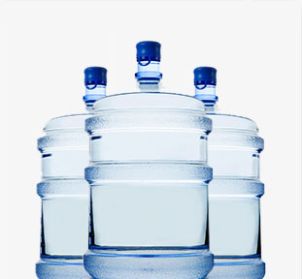
Water Contaminant Spotlight: Total Dissolved Solids

Total dissolved solids (TDS) are organic and inorganic substances that have dissolved in liquid. These can include:
- Calcium
- Magnesium
- Potassium
- Sodium
- Nitrate
- Chloride
- Sulfate
Total dissolved solids can enter a tap water source and cause a variety of negative effects, most often taste and odor problems. Fortunately, a professional water test and consultation can identify an elevated TDS level, and an expert can recommend ideal solutions.
Here’s what to know about total dissolved solids.
What Are Total Dissolved Solids?
The “solids” in total dissolved solids can be found almost everywhere. These areas include:
Rocks, Bedrock and Soil
Water comes from multiple sources to feed your well or municipal supply. Along the way, this water runs across or through rocks, bedrock, soil and other natural or geological features, dissolving the minerals that form them.
Limestone (calcium carbonate) and halite (sodium chloride) most readily dissolve, so areas with these substances may have a particularly high TDS level. On the other hand, regions with rocks less susceptible to weathering — such as quartz-rich granite — likely have a low TDS level.
Seawater
Well water near coastal regions may have a high TDS level. That’s because seawater has high mineral content — for example, sodium chloride (salt) — that may intrude into the water source. The ocean also leaves mineral deposits that can increase TDS concentration throughout a natural water system.
Human Activity
Everything from mining and agriculture to everyday water use can add to the TDS concentration. Even the salt used for icy roads can impact the water supply.
Why Total Dissolved Solids Matter
Because water moves through nature as part of necessary cycles, a certain TDS level is expected — and nothing to be concerned about. However, certain events, including big storms or sewage contamination, can add too much mineral content.
Varying TDS levels in water can have certain undesirable effects, including:
- Taste: Water’s taste can change depending on the mineral content or other TDS components. For example, too much chloride can make water taste salty, while sulfate is bitter and bicarbonate is astringent. On the other hand, low TDS can make water taste flat.
- Corrosion: High TDS concentration can corrode distribution systems, pipes, water-using appliances and more.
Scaling: TDS also contributes to scaling or mineral buildup inside water-using appliances, reducing service life. - Deterioration: The more often you wash clothes and other cloth material in water with high TDS, the faster these items will deteriorate.
- Health: Both the Environmental Protection Agency and Guidelines for Canadian Drinking Water Quality maintain aesthetic limits on TDS levels, which refer to taste, appearance and odor problems. These organizations don’t set primary standards for TDS, which generally means the substance in question isn’t a significant risk to human health. However, some contaminants that can be part of TDS — such as nitrate — could potentially cause negative effects and require further water testing.
Do you have water problems like these?
Try our Water Solutions Finder for the best next step.
Testing and Reducing TDS in Your Water
Water on its own doesn’t conduct electricity very well, but dissolved ions — especially those found in certain mineral content — change that. A TDS meter measures conductivity to report on the TDS level in your water supply.
While at-home TDS testers are available, they generally don’t provide in-depth information on how TDS content impacts your water quality or what steps to take next. That’s why a professional water test is often the best decision. A local water expert will test your home’s tap water for TDS — but they also can provide information on other common issues like water hardness, iron, chlorine and other potential contaminants.* That means you get a full snapshot of your water quality.
Better yet, your expert will recommend water treatment options based on your needs. For example, a reverse osmosis drinking water filter is a great solutions for high TDS and a broad range of other water issues.
Treat Your Drinking Water With Confidence
Whether you have concerns about high TDS or any other contaminants, water treatment is a smart choice. To learn more about your water quality and which solutions are right for you, start with professional help from your local Culligan Water® expert.
Schedule your free, in-home water test and consultation today.
*Contaminants may not be present in your water.
Related Articles
FAQ: Are There PFAS in Bottled Water?
8 min read
What is PFAS Water Testing?
11 min read
PFAS Regulations in the U.S.
15 min read
Find A Location Near Me

Schedule Your Free
In-Home Water Test
Get better water in your home by scheduling an appointment with your local Culligan Water Expert.
Discover More
See All Articles

FAQ: Are There PFAS in Bottled Water?
Although drinking water quality has always been important, it’s a particularly hot topic these days — especially as researchers learn more about PFAS, sometimes called “forever chemicals.” These substances have […]
8 min read

Explore

Explore
Our Products

Water Softeners
With any of our soft water systems, get more out of your water-using appliances while spending less on energy and detergent.
View Products

Water Delivery
There’s never been a better time to enjoy the convenience of scheduled bottled water deliveries from the Culligan® Water Experts
View Products

Water Filtration Systems
Culligan's water filtration systems have improved water quality for thousands of families worldwide.
View Products
